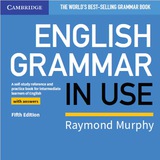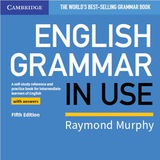tgoop.com/English_Grammar_in_Use_5th/868
Last Update:
now that
conjunction
📌 "Now that" is used to indicate a cause-and-effect relationship between two events or situations. It is typically used to explain that something is happening or has become possible in the present because of a recent change, condition, or event.
📌 Meaning:
"Now that" implies that a particular action, event, or circumstance in the present is a consequence or result of something that happened or changed in the past.
📌 Usage:
To use "now that" in a sentence, you generally follow this structure: "Now that + clause with a past event or condition, main clause indicating the current result or action."
📌 For example:
1- "Now that I have a driver's license, I can drive to work." (Past event: Obtaining a driver's license, Current result: Ability to drive to work)
2- "Now that the rain has stopped, we can go for a walk." (Past event: Rain stopping, Current result: Opportunity to go for a walk)
3- "Now that the exam is over, I can relax and enjoy my weekend." (Past event: Completion of the exam, Current result: Ability to relax and enjoy the weekend)
In each of these examples, "now that" is used to connect a past event or condition with a present result or action, showing the cause-and-effect relationship between them. It has the same meaning of: as a consequence of the fact that; since; inasmuch as.
More examples:
4- Now that I live only a few blocks from work, I walk to work and enjoy it.
5- Of course, now that she's eighteen, she can make these decisions for herself.
6- We don't see much of Elliot now that he's in London.
7- Now that you're here, you might as well stay for dinner.
8- All right, now that I'm full in the picture (thoroughly understand the issue), what can I do for you?
https://www.tgoop.com/English_Grammar_in_Use_5th
BY English Grammar in Use

Share with your friend now:
tgoop.com/English_Grammar_in_Use_5th/868
